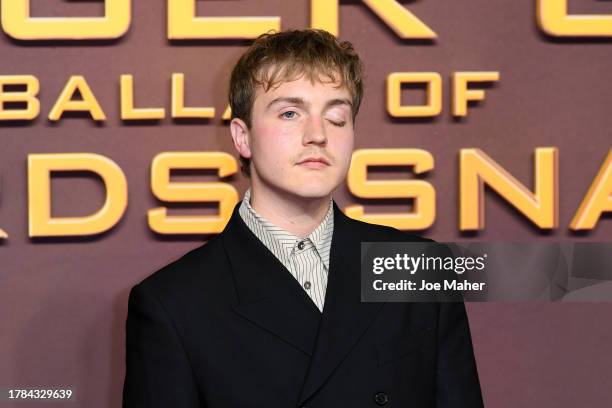Kjell Brutscheidt, a name that has sparked curiosity due to an unusual characteristic, is a man whose eye has drawn attention from the public. While he is relatively well-known in his field, it’s his eye that has led to discussions, questions, and speculation. In this article, we will explore the story behind Kjell Brutscheidt’s eye condition, examine the medical aspects of such conditions, and highlight the societal implications of living with visible differences. Let’s dive into this intriguing journey.
Who is Kjell Brutscheidt?
Before we delve into the mystery of his eye, let’s first understand who Kjell Brutscheidt is. A private person with a compelling background, Brutscheidt has carved his niche in his professional life, gaining recognition for his work. However, it is his eye that has inadvertently brought him into the spotlight.
People have often questioned whether his eye condition has impacted his life and career. While his achievements are certainly noteworthy, the public’s fascination with his eye has led to widespread curiosity. This article aims to explore the medical, personal, and social dimensions of this phenomenon.
The Eye Condition: What Happened?
When it comes to Kjell Brutscheidt’s eye, speculation has run rampant about the possible causes. Some assume that his eye may be the result of a medical condition like ptosis or strabismus, which affect eye alignment or function. Ptosis, or drooping eyelids, can occur due to weakened muscles or nerve damage, making it difficult for the eye to remain open. Strabismus, on the other hand, refers to misalignment of the eyes.
Though medical professionals have not publicly confirmed a diagnosis, the speculation about these common conditions is not unreasonable. Eye conditions like these can vary in severity and often have multiple causes, including genetics, trauma, or other underlying health issues. Understanding these conditions is essential in debunking myths and building awareness about eye health.
In many cases, the causes of visible eye conditions are linked to personal and genetic factors. It’s important to understand that no two conditions are exactly alike, and there could be a combination of factors influencing Brutscheidt’s unique situation. Consulting with specialists is crucial to gain insight into the true nature of such conditions.
Kjell Brutscheidt’s Personal Journey
Despite the attention his eye has garnered, Brutscheidt has handled his situation with grace and professionalism. Living with a visible condition can be challenging, and it is clear that Brutscheidt has had to confront both public curiosity and personal challenges. How has this affected him personally?
Brutscheidt’s story reflects resilience. It is not uncommon for individuals with visible differences to face social stigma or discrimination. However, Brutscheidt’s ability to navigate this while remaining focused on his career highlights the strength of character required in such situations. Over time, Brutscheidt has become an inspiration for others dealing with similar challenges, showing that confidence and success are not limited by outward appearances.
The psychological impact of living with a condition like this is also worth considering. The stress of being scrutinized, especially in the public eye, can take a toll on one’s mental health. However, Brutscheidt’s ability to remain composed and centered in his life showcases the power of self-acceptance and understanding.

Public Reaction and Media Coverage
The media’s portrayal of Kjell Brutscheidt’s eye condition has played a significant role in shaping public opinion. While some outlets approach the topic with sensitivity, others may sensationalize or perpetuate rumors. How has this affected public perception?
In today’s age, social media has the power to spread information, both accurate and false, rapidly. When it comes to someone with a visible condition, people often form opinions based on limited knowledge or superficial judgments. In Brutscheidt’s case, some media outlets may have focused more on his eye than his professional accomplishments, inadvertently distorting the narrative.
However, there’s also an emerging trend of increased empathy and awareness surrounding visible differences. The rise of platforms that promote body positivity and acceptance has played a role in shifting conversations. This is a positive development, as it helps foster a more inclusive society where differences are celebrated rather than stigmatized.
Could There Be a Solution? Medical Insights
From a medical standpoint, could Brutscheidt’s eye condition be treated? What options exist for those with similar conditions? While it’s not clear if Brutscheidt has pursued medical intervention, there are treatments available for those who seek them.
Corrective surgery or other therapies might be viable options for conditions like ptosis or strabismus. Surgical procedures can help realign the eye or correct the drooping eyelid. However, these procedures come with risks, and individuals often weigh the benefits against potential complications.
Emerging medical technologies, such as advancements in laser surgery and gene therapy, are continually improving the ways ophthalmologists treat such conditions. While corrective surgeries are available, the decision to undergo treatment remains deeply personal and dependent on individual circumstances.
The Bigger Picture: Understanding and Empathy in Society
Kjell Brutscheidt’s eye condition serves as a reminder of the broader issue of societal acceptance and empathy for individuals with visible differences. People who deviate from societal norms in appearance often face prejudice or exclusion, but these experiences can be mitigated by fostering a culture of understanding.
Instead of focusing on physical traits, it is crucial to focus on an individual’s talents, abilities, and character. By embracing diversity and promoting empathy, society can move toward more inclusive and compassionate spaces for everyone, regardless of appearance.
Brutscheidt’s story highlights the need to challenge conventional beauty standards and recognize that everyone deserves respect, no matter their appearance.
Conclusion
Kjell Brutscheidt’s eye condition may have initially sparked curiosity, but his resilience and grace in navigating this unique aspect of his identity serve as a source of inspiration. His experience reminds us that visible differences should not define a person’s worth or capabilities.
Understanding the medical and societal implications of living with a visible condition is essential in fostering empathy and acceptance. By shifting the focus from superficial judgments to deeper, more meaningful conversations, we can create a more inclusive society that embraces all individuals, regardless of their physical traits.







